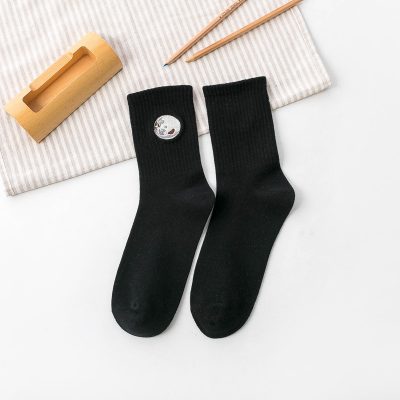Let’s talk about the materials that must be used in socks making
Polyester fibre, commonly known as “polyester”. It is a synthetic fiber obtained by spinning polyester formed by polycondensation of organic dibasic acid and diol, referred to as PET fiber. Polyester has excellent wrinkle resistance, elasticity and dimensional stability, good electrical insulation properties, resistance to sunlight, abrasion, mildew and moth, good resistance to chemical reagents, and resistance to weak acids and alkalis. At room temperature, it has a certain resistance to dilute and strong acids, but it has poor resistance to strong alkalis. The dyeing performance of polyester is poor, and it is generally required to be dyed with disperse dyes at high temperature or in the presence of a carrier.
Its biggest advantage is that it has good wrinkle resistance and shape retention, and has high strength and elastic recovery capabilities. It is durable, anti-wrinkle, non-ironing, and non-sticky.
Polyester has many excellent textile properties and wearability. It can be used in a wide range of applications. It can be purely woven or blended with natural fibers such as cotton, wool, silk, hemp and other chemical fibers. Easy-to-dry, non-iron and washable, wool-like, cotton-like, silk-like and linen-like fabrics with good performance. Polyester fabric is suitable for men’s and women’s shirts, outerwear, children’s clothing, interior decoration fabrics and carpets. Because polyester has good elasticity and bulkiness, it can also be used as cotton wool. In industry, high-strength polyester can be used as tire cords, conveyor belts, fire hoses, cables, fishing nets, etc., as well as electrical insulation materials, acid-resistant filter cloths, and papermaking blankets. The non-woven fabric made of polyester can be used for interior decoration, carpet backing, medical industry cloth, fleece, lining, etc.







